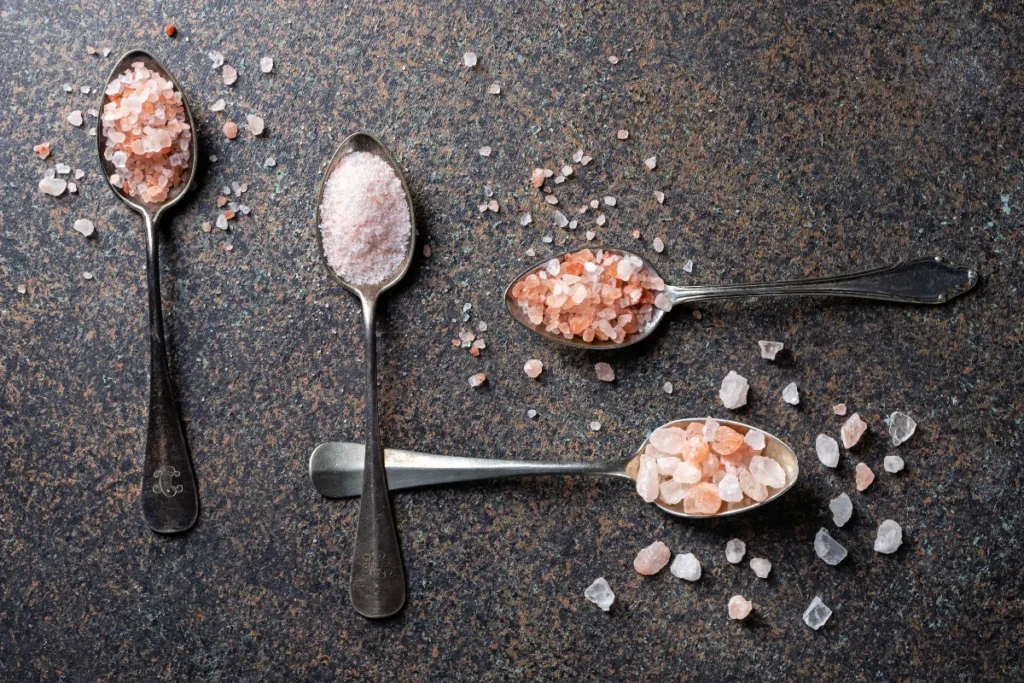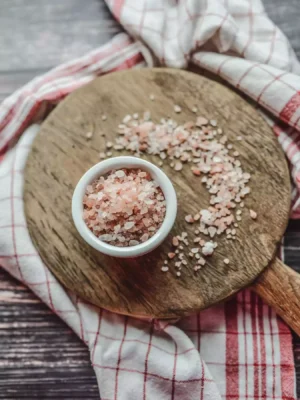Salt has always been at the heart of cooking the quiet element that elevates every flavor. Yet not all salts are created equal. Over the past decade, chefs across the globe have been turning to Himalayan pink salt for its subtle taste, mineral depth, and natural purity. From high-end restaurants to creative home kitchens, this beautiful pink crystal has found its way into countless recipes. But what makes it so special? Let’s explore why chefs around the world prefer pink salt in their cooking.
What Makes Himalayan Pink Salt Different from Regular Salt?
Himalayan pink salt comes from the Khewra Salt Range in northern Pakistan, one of the world’s oldest and purest natural salt deposits. These ancient mines date back over 250 million years and are known for producing salt that remains free of pollutants and additives. Unlike table salt, which is refined and mixed with chemicals to prevent clumping, pink salt is hand-mined and minimally processed.
Its unique blush color is due to trace minerals especially iron oxide and small amounts of magnesium, calcium, and potassium. These elements don’t drastically change the sodium content but do create a slightly more layered, mineral-rich flavor that professional chefs find appealing. It’s salt in its most natural form, balancing purity with a touch of complexity.
Why Do Chefs Consider Pink Salt Better for Flavor?
When cooking, salt is about more than salinity; it’s about how it interacts with ingredients. Himalayan pink salt offers a smoother, more rounded taste that enhances rather than overwhelms. Chefs often describe it as “clean” or “soft” on the palate. This subtlety allows them to bring out the true flavors of meat, vegetables, or desserts without masking them.
For delicate preparations such as seafood, pastries, or sauces, chefs frequently use Fine Himalayan Pink Salt to achieve precise seasoning. Its fine grain dissolves evenly, ensuring consistency in taste. The result is balanced flavor the kind that lets ingredients speak for themselves.
How Do Chefs Use Pink Salt in Their Kitchens?

Pink salt’s versatility is one of the reasons it’s found in professional kitchens around the world. Chefs use it in multiple ways:
- As a seasoning base during cooking.
- As a finishing touch for texture and visual appeal.
- For curing meats, fermenting vegetables, and making flavored salts.
- Even as a cooking surface pink salt blocks retain heat beautifully and impart mild seasoning to grilled foods.
When a chef wants to add both taste and presentation value, Coarse Himalayan Pink Salt is often their choice. It provides texture, color, and a subtle crunch that elevates everything from roasted vegetables to gourmet desserts. The grains also add a visually appealing sparkle that makes dishes look refined without artificial enhancements.
Is Himalayan Pink Salt Healthier for Cooking?
Most chefs don’t choose pink salt for health reasons alone, but its natural purity certainly adds to its appeal. Because it’s unrefined, it doesn’t contain additives commonly found in processed salts. Trace minerals like magnesium and potassium may help support hydration and maintain electrolyte balance, especially when cooking in hot environments or during long service hours in professional kitchens.
Still, chefs emphasize moderation Himalayan pink salt should enhance flavor, not dominate it. Its natural origin and minimal processing simply make it a cleaner, more authentic ingredient aligned with modern culinary values: quality, sustainability, and simplicity.
Does Pink Salt Change the Texture or Appearance of Food?
Yes, and that’s part of its charm. Coarse grains of pink salt offer a gentle crunch that brings a dish to life, while its distinctive color adds visual warmth. Many chefs use pink salt as a “finishing salt” sprinkled just before serving to provide a burst of flavor and texture.
Its slow-dissolving nature allows layers of seasoning, ensuring that every bite delivers balanced taste. Whether it’s seared steak, roasted potatoes, or handmade chocolates, pink salt adds dimension without overpowering the plate. In fine dining, even small details like this create memorable culinary experiences.
How Are Chefs Worldwide Using Pink Salt in Modern Cuisine?
Across cultures, pink salt has found unique applications. In Japan, it’s paired with tempura to highlight subtle crispness. French chefs use it in patisserie and caramel for its balanced salinity. Middle Eastern cuisines feature it in rubs for grilled meats, complementing rich spices with clean minerality.
Its global popularity reflects a broader movement toward natural, minimally processed ingredients. Chefs are not just cooking with flavor in mind they’re cooking with transparency and story. The origin of Himalayan pink salt from Pakistan’s mountains adds authenticity to every plate, connecting cuisine with nature’s oldest resources.
What Can Home Cooks Learn from Chefs About Using Pink Salt?
For home cooks, the lesson is simple: quality ingredients make a difference. Instead of viewing salt as a background element, think of it as a finishing note that defines balance. Use fine salt for soups, sauces, and baking; save coarse crystals for seasoning meats or finishing vegetables.
Cooking with Himalayan pink salt is less about luxury and more about mindfulness an awareness of how something so simple can elevate the dining experience. It’s a reminder that purity and intention often make food taste better, even in everyday meals.
Final Thoughts: Why Pink Salt Is the Chef’s Choice Worldwide
The growing preference for Himalayan pink salt among chefs isn’t about trend; it’s about trust. It delivers consistency, beauty, and depth of flavor in ways refined salt cannot. From the kitchens of Michelin-starred restaurants to the tables of passionate home cooks, it’s become a symbol of natural refinement and culinary care.
At Luumin, this salt’s journey begins deep within Pakistan’s ancient mountains and reaches kitchens around the world carried by a shared appreciation for quality and authenticity. Chefs who wish to explore its potential or source bulk quantities for culinary projects can always contact Luumin to learn more about the range and origins of this exceptional mineral.



